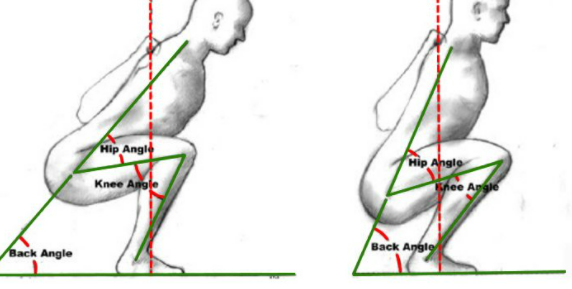How To Fix Knee Pain From Squats
The squat is one of the foundational strength movements and should be part of the solution to knee pain. However, it's common for many people to experience knee pain with the squat as they are learning or adding weights and reps to their routine. In this article we'll show you how to fix knee pain from squats with five easy changes.
How To Fix Knee Pain From Squats
Knee pain from squatting is most commonly caused by small issues with form and positioning. This can become exagerated and lead to pain with more weight and more reps. In this article we'll look at five things that can cause knee pain from squatting and show you how to fix them.
Change Your Stance
It's important to remember that ever person has their own unique squat stance that's best for their body. Fixing your squat stance can limit the impact that goes through your ankles, knees, and hips. Play around with the width of your feet as well as the amount of 'toe out' with your squat stance until you find the most comfortable position for your knees.
Press Your Knees Out
Once you've found the right squat stance for your body, be sure to press your knees out to limit impact at the knee joint. This will prevent your knees from 'caving in' while you squat. Adding a band just above your knees when you squat is a great reminder to keep your knees pressed out.
Unlock At Your Hips (vs. Your Knees)
If you are having knee pain when you squat, make sure you initiate the movement by sending your hips back (vs. bending at your knees). Unlocking at your hips creates less of an angle at the knee and limits the pull/impact that occurs at the knee joint as you sink lower into the movement.
Initiating the squat from your knees (left) leads to more tension on knee. Sending your hips back (right) creates a better angle at the knee.
Limit Your Depth
This can be a common problem for people who have the more flexible/hypermobile bodytype. Sinking too low into your squat creates a very steep angle at the knee which increases the amount of pull and tension at the knee. This can lead to more knee pain at higher weights and reps. To ease knee pain, stop yoru squat once your thighs get parallel to the ground.Note: This isn't to say that deep squatting is inherently bad. But it should be avoided until your knee has healed and form is perfected.
The deeper you sink into your squat the smaller knee angle you create. This places more pull/tension on front of knee and leads to more impact in the knee joint itself.
'Screw' Feet Into Ground
Developing tension in our muscles in one of the best way to take pressure off our joints. One way to create tension in our legs (to protect our knees) while we squat is to actively 'screw' your feet into the ground. The feet won't move, but by turning your feet outward you'll create tension and torque up the entire leg to pretect your knee joint.
Watch The Video Below To Learn More About How To Fix Knee Pain From Squats
Learning, understanding, and practicing the squat is one of the best things you can do to solve knee pain. To learn more about improving movement and strength to solve years of chronic joint pain and maintain your lifestyle as you get older, be sure to join our community and download your free ‘Solving Pain With Strength’ exercise program below.




